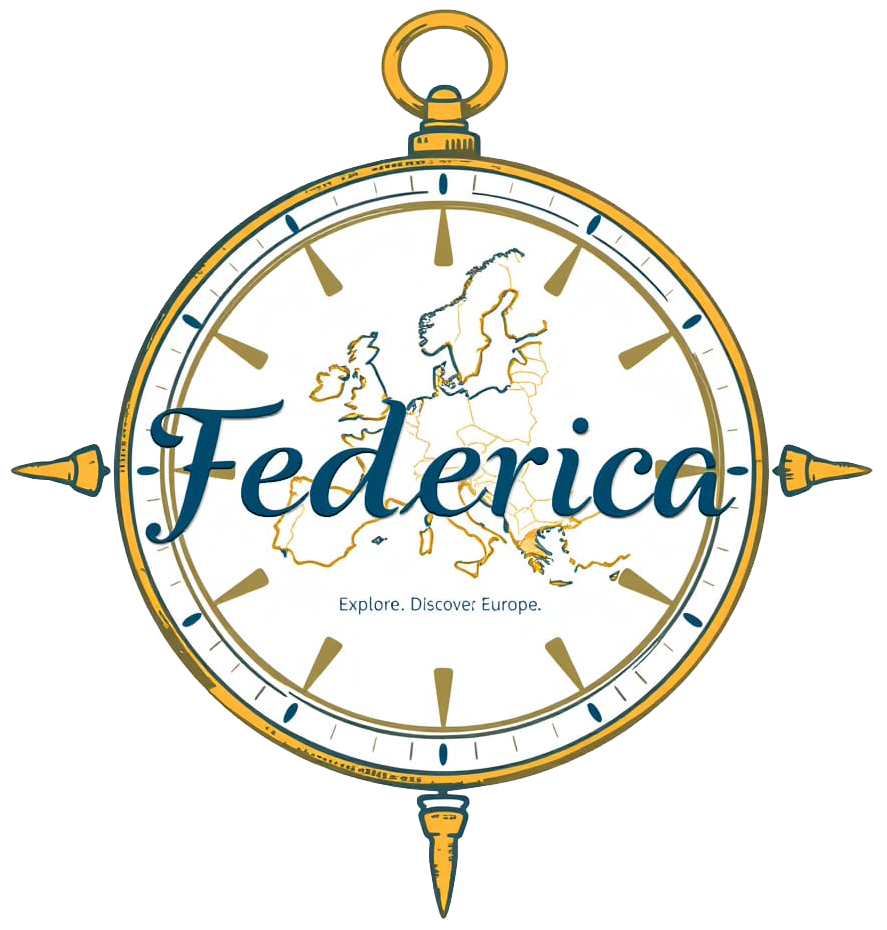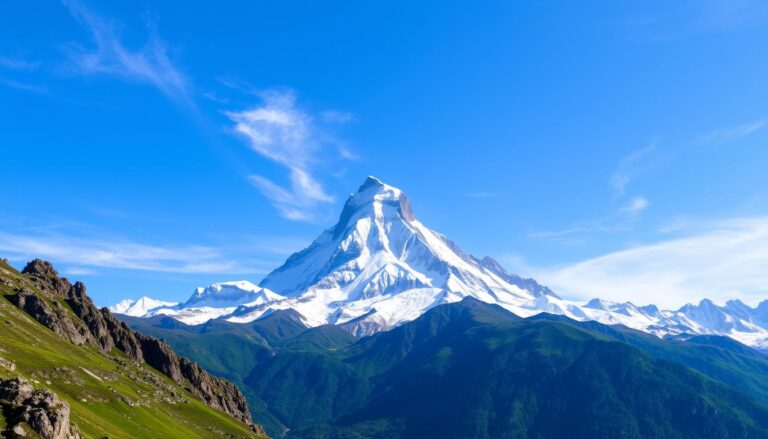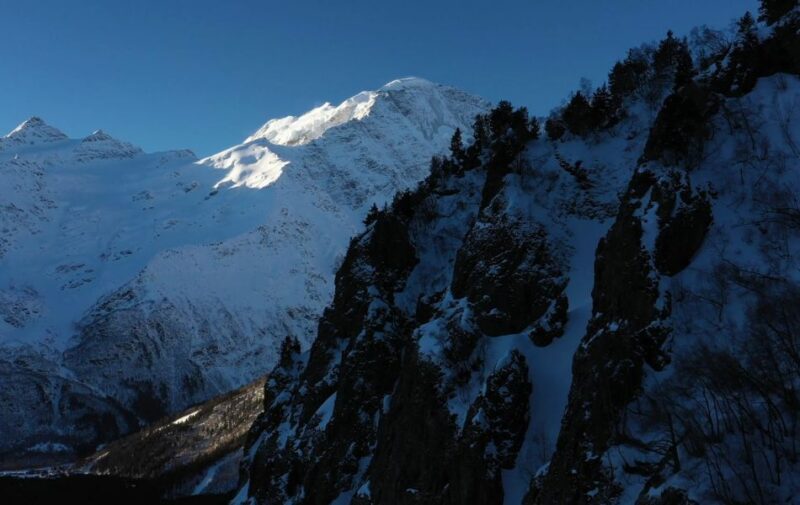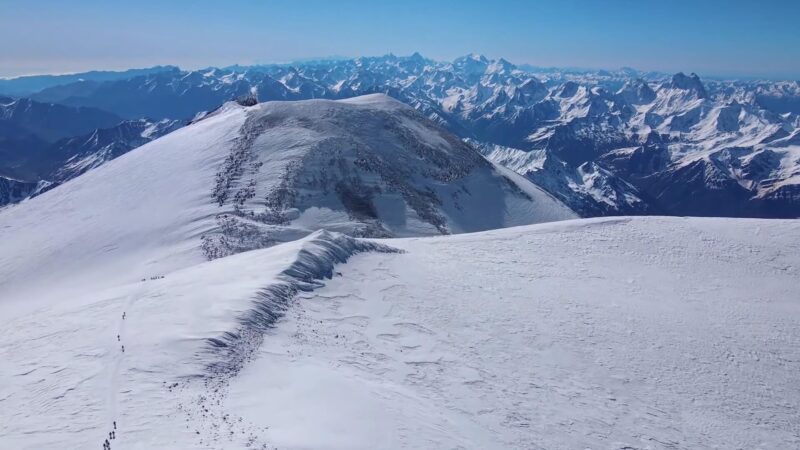Europe, a continent famed for its rich history, cultural diversity, and breathtaking landscapes, is also home to some of the world’s most majestic mountain ranges. From the towering Alps to the rugged Pyrenees, Europe’s peaks have long captivated adventurers and nature enthusiasts alike.
Yet, amidst this grand tapestry of natural beauty, one question often arises: which mountain holds the title of the tallest in Europe?
In the quest to discover the tallest mountain in Europe, one name frequently stands at the forefront – Mount Elbrus.
This imposing titan, nestled in the Caucasus Mountains of Russia, has long been celebrated for its immense stature and compelling allure. But what truly sets Mount Elbrus apart, and how does it compare to the other highest peaks in Europe?
Embark on an exhilarating journey through the European mountain ranges as we delve into the intriguing details of Mount Elbrus and other notable summits in the European summit rankings.
This exploration promises to be not just an informative ascent, but a deeply engaging experience that uncovers the wonders and challenges of Europe’s highest peaks.
The Tallest Mountain in Europe: Mount Elbrus
Nestled in the Caucasus Mountains, Mount Elbrus stands as the tallest peak in Europe at an impressive 5,642 meters (18,510 feet) above sea level. This majestic mountain, which also holds the title of the highest in Russia, boasts two prominent summits.
While the higher western summit reaches 5,642 meters (18,510 feet), the slightly lower eastern summit stands at 5,621 meters (18,442 feet).
Mount Elbrus is a dormant volcano with a fascinating history. The last recorded eruption dates back to around 50 AD. Since then, its imposing presence has been a source of inspiration for adventurers and a key landmark in the Caucasus range, straddling the border between the Russian republics of Kabardino-Balkaria and Karachay-Cherkessia.
The formation of this giant began about 10 million years ago, with its main caldera shaping around 700,000 years ago. Today, its ice-cap climate offers a unique challenge for climbers, with snow common for about 45 days annually.
One cannot overlook the natural beauty encompassing Mount Elbrus. Spanning approximately 138 square kilometers, its snowfields feed 22 main glaciers and 77 secondary glaciers.
This extensive glacial area significantly impacts regional weather patterns, especially given the mountain’s proximity to both the Black Sea (100 km) and the Caspian Sea (370 km). Whether you’re a seasoned climber or an enthusiast, the panoramic views from the peaks are undeniably breathtaking.
When planning an ascent, the mountain’s cable car system on the south side offers a helping hand, reaching up to 3,658 meters (12,500 feet). Moreover, a rescue hut established in 2010 at 5,500 meters helps ensure climber safety.
The routes to the summit can be daunting, with challenges posed by snow, ice, high winds, low visibility, and high altitude. However, the north side presents an even tougher task due to less developed infrastructure, demanding greater self-reliance from climbers.
Here is a summary of the awe-inspiring features of Mount Elbrus:
| Feature | Details |
|---|---|
| Elevation | 5,642 meters (18,510 feet) |
| Prominence | 4,741 meters (15,554 feet) |
| Summits | Western: 5,642 meters; Eastern: 5,621 meters |
| Last Eruption | Around 50 AD |
| Snow Coverage | About 45 days per year |
| Average July-August Temperature | 22°C (72°F) |
| Glaciers | 22 main glaciers and 77 secondary glaciers |
Mount Elbrus’s prominence and sheer beauty make it a must-visit for anyone seeking an overview of Mount Elbrus or aiming to challenge themselves against one of the world’s most majestic peaks. The unique attributes of this mountain ensure an unforgettable experience for all who dare to explore its heights.
Comparison to Other European Mountains
Mount Elbrus in Russia, at a staggering 5,642 meters (18,510 feet), firmly holds its place as the tallest peak in Europe. While Mont Blanc: The Highest Peak in the Alps stands majestically on the Franco-Italian border at 4,808 meters (15,774 feet), it is notably shorter in comparison to Mount Elbrus.
This magnificent mountain dominates the European landscape, inspiring those who seek the ultimate mountaineering challenge. With a difference of 834 meters, the scale of Elbrus’s dominance becomes clear, positioning it as a beacon for adventure lovers.
When compared to other towering giants, Mount Elbrus’s stature maintains its supremacy. For instance, Georgia’s Shkhara, the next highest peak, reaches a formidable 5,193 meters (17,037 feet).
Although commendable, it still falls over 400 meters short of Elbrus. Similarly, Turkey’s Mount Ararat follows closely at 5,137 meters (16,854 feet), once again reinforcing Elbrus’s pre-eminence. Even as Mont Blanc: The Highest Peak in the Alps captivates with its renowned and challenging climbs, it remains 834 meters shy of claiming the top spot in Europe.
In Switzerland, Pointe Dufour of Monte Rosa stands as the tallest peak, reaching an elevation of 4,634 meters (15,203 feet). Though impressive, it pales in comparison to Mount Elbrus. Austria’s Grossglockner, striking at 3,798 meters (12,461 feet), is dwarfed in this illustrious line-up.
Furthermore, in the Caucasus Mountains, peaks like Dykh-Tau at 5,250 meters and Kazbek at 5,054 meters contribute to the region’s notoriety for high altitudes, yet still defer to Elbrus’s unmatched elevation. Here, Belgium’s comparatively modest Signal de Botrange, a summit of a mere 694 meters, serves as a reminder of Europe’s vastly varied terrain.
The towering presence of Mount Elbrus eclipses all other peaks, embodying both the splendour and the intrepid spirit of Europe’s mountainous regions.
Whether you’re an avid climber or an admirer of natural grandeur, recognising the prominence of Mont Blanc: The Highest Peak in the Alps and other distinguished summits only accentuates the extraordinary ascent of Elbrus, a true giant of the European continent.



